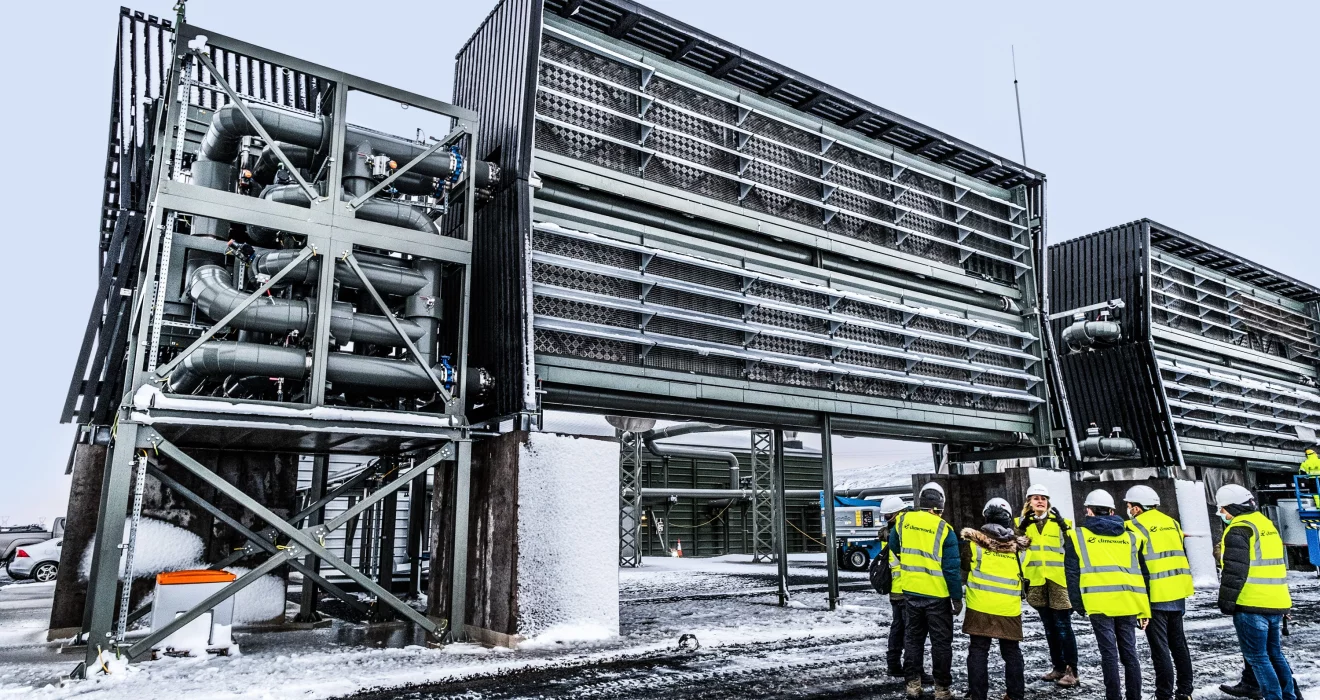In recent years, the escalating urgency to combat climate change has prompted a search for groundbreaking solutions in carbon capture and storage. Swiss company Climeworks has emerged as a pioneer in this field, achieving a significant milestone by effectively extracting carbon dioxide from the atmosphere and securely burying it underground. This innovative approach not only signifies a crucial step towards reducing greenhouse gas concentrations but also underscores the potential for transformative Carbon Removal Technologies in addressing the pressing challenges of global climate change. Climeworks’ success adds momentum to the collective efforts aimed at mitigating the impact of carbon emissions and fostering a sustainable future.
Climeworks’ Direct Carbon Removal Technology
Founded in 2009 as a spinoff startup from ETH Zurich, Climeworks employs a unique approach to carbon removal. The technology involves vacuuming greenhouse gases out of the air, filtering them, and then burying them in the ground. This direct carbon removal method is distinct from traditional emissions reduction strategies, as it focuses on pulling existing CO2 from the atmosphere for storage, preventing it from further contributing to the greenhouse effect.
Climeworks’ recent achievement of successfully burying carbon dioxide in the ground and turning it into rock, as verified by an independent third-party audit, marks a significant milestone. The process, known as carbon sequestration, entails dissolving carbon dioxide in water and mixing it with basalt rock formations. The material undergoes a natural transformation into solid carbonate minerals within just two years. This swift conversion is a notable advantage over the slow decomposition of plastics in landfills and the persistence of harmful chemicals in the environment.
Market Adoption and Endorsements
Climeworks has gained traction in the emerging carbon removal industry, attracting major corporations like Microsoft, Shopify, and Stripe as clients. These companies have purchased future carbon removal services, signaling a growing interest in investing in technologies that directly address the existing carbon concentration in the atmosphere. The credibility of Climeworks’ achievement is further underscored by certifications from independent auditors like DNV, ensuring that the carbon removal process is more than mere green washing.
The financial backing of over $780 million, including support from investors like Swiss Re and VC John Doerr, positions Climeworks to scale its operations. The main carbon dioxide removal facility, located in Iceland, collaborates with partner company CarbFix for underground storage. While the current capacity is a small percentage of global carbon emissions, Climeworks’ ability to attract investment and partnerships suggests potential scalability.
Costs and Affordability
One of the critical considerations in the widespread adoption of direct carbon removal technology is its cost. The price for carbon removal typically runs into several hundred dollars per ton, varying based on the quantity and commitment period chosen by clients. Individuals can also participate in offsetting personal emissions by engaging with Climeworks, although the affordability of such services may pose challenges for broader public engagement.
The recent construction of Climeworks’ second commercial-scale plant in Iceland, with the capacity to capture and store 36,000 metric tons of CO2 per year, reflects the company’s commitment to expanding its impact. As this technology evolves, cost-effectiveness will play a pivotal role in determining its feasibility as a solution to combat climate change.
Global Carbon Emissions Landscape
To contextualize Climeworks’ contribution, it is crucial to examine the broader landscape of global carbon emissions. In 2021, carbon emissions reached a record 36.3 billion metric tons, with fossil-fuel burning industrial plants identified as the primary contributors. Acknowledging the scale of the challenge, technologies like Climeworks’ direct carbon removal present a promising avenue for addressing emissions from corporate polluters, who bear the majority of the responsibility for global emissions.
Alternative Carbon Capture Technologies
While Climeworks’ direct carbon removal is a pioneering approach, other carbon capture technologies also play a crucial role in mitigating climate change. The Global CCS Institute identifies three main types of carbon capture: pre-combustion, post-combustion, and oxyfuel with post-combustion. Pre-combustion process involves converting fuel into a gaseous mixture of hydrogen and CO2. The hydrogen is separated and can be burnt without producing CO2, while the captured CO2 can be compressed for transport and storage. Despite its potential, the complexity of fuel conversion steps makes pre-combustion more challenging to apply to existing power plants. Post-combustion is more straightforward approach, post-combustion focuses on capturing CO2 after the combustion of fossil fuels. This technology is more adaptable to existing power plants, making it a viable option for reducing emissions from established industrial facilities. Oxyfuel with post-combustion is a hybrid approach involves burning fuel in an oxygen-rich environment, producing a flue gas with concentrated CO2. Similar to post-combustion, the captured CO2 can then be stored or utilized for various applications.
Conclusion
Climeworks’ success in direct carbon removal opens a promising chapter in the fight against climate change. The ability to capture and store carbon dioxide, with the added benefit of transforming it into rock, presents a compelling solution. However, the scalability and affordability of such technologies remain crucial considerations. As Climeworks continues to expand its operations and gain support from major corporations, the potential for direct carbon removal to contribute significantly to global emissions reduction becomes evident.
In parallel, existing carbon capture technologies, such as pre-combustion and post-combustion, play pivotal roles in addressing emissions from different sectors. The collective efforts of these innovative approaches may hold the key to achieving substantial progress in mitigating the impact of carbon emissions on the environment. The ongoing commitment of businesses, investors, and governments to support and adopt these technologies is essential for realizing a sustainable and carbon-neutral future.

